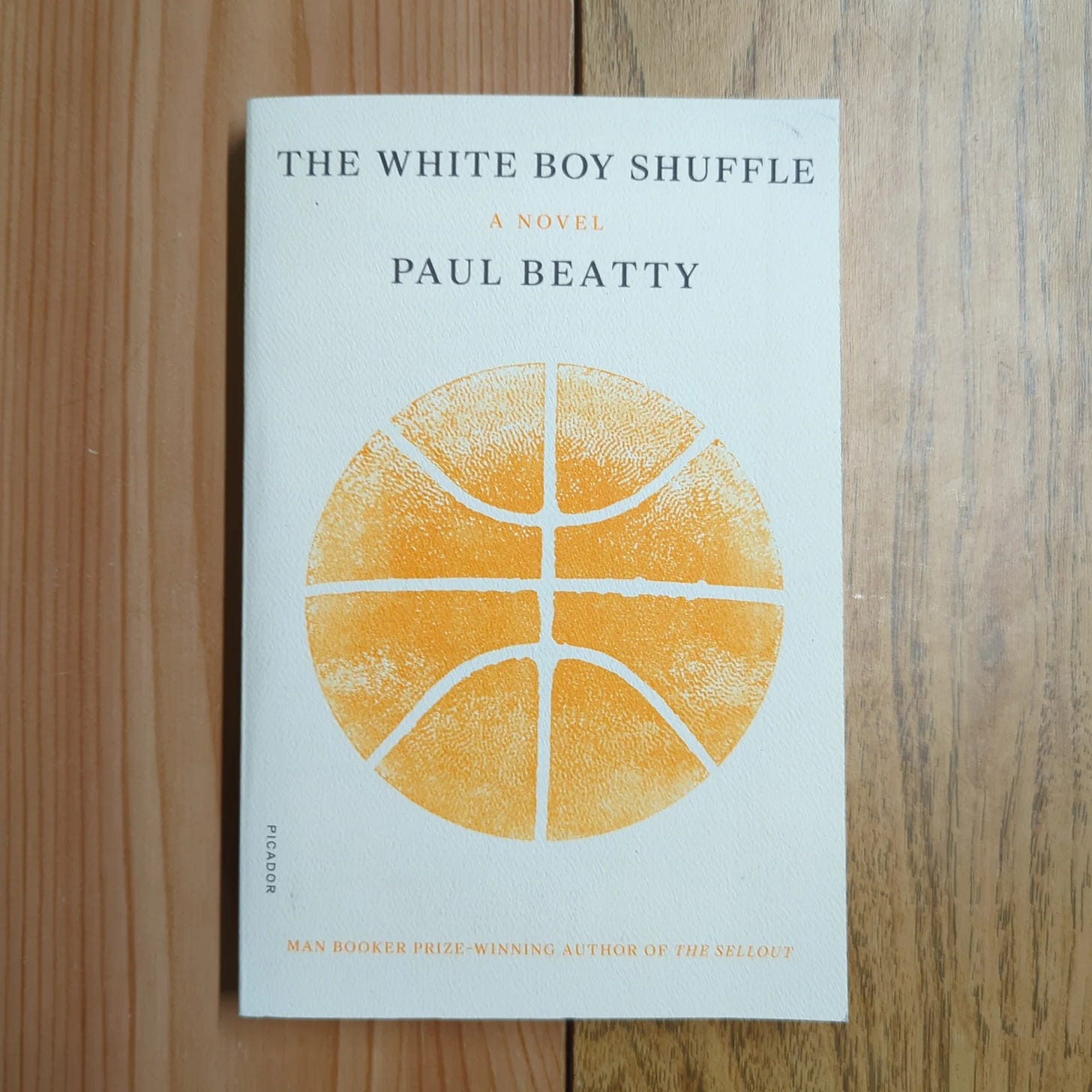Last Saturday I saw a lunchtime screening of Poor Things (no spoilers) at the lovely Castle Cinema on Homerton’s Chatsworth Road. (The beer’s crap but everything else about the cinema: really good.) Everyone’s been talking about the film’s standout costume design—Holly Waddington’s puffy, frilly, sexually-liberated garments and gowns, currently on display at the Barbican—but I was most taken by the sets, painted stages redolent of Old Hollywood mastery and psilocybin digestion. “It all starts with us. Everybody else follows the world that we create, so it’s a great responsibility, setting the tone and making it believable for these characters to inhabit that world,” said James Price, one of the production designers, who also art directed Paddington 2. I believed in that bear, too.
The world of Poor Things is refracted through filmmaker Yorgos Lanthimos’ singularly warped lens: his film moving from sweeping shots of miniature recreations of brass-luxe steamships and the crumbling city of Alexandria to close-ups of chunks of each, the plastered corner of a bazaar or askew ship-deck, where demented seaman execute seagulls (no spoilers!). And this kind of zoom-in, zoom-out approach to buckled verisimilitude reminded me, in its own peculiar little way, of Booker-winner Paul Beatty’s debut novel White Boy Shuffle1, which I’m currently reading, and enjoying, for the first time. The story of a young black surf-bum who swaps white-washed Santa Monica for a cartoonish depiction of gangland West LA, Beatty’s use of exaggeration teeters on the edge of silliness keeping you off-balance like an showboating boxer windmill-winding up his punch only to jab you in the nose with a poisoned pathos—a short, sharp, accurate blow that catches you off-guard.
I’m also reading last year’s much-lauded When Crack Was King: A People's History of a Misunderstood Era by Donovan X Ramsey, about America’s crack cocaine epidemic. Mixing personal essay, character portraits, history, politics, and more, it shines on a light on social hypocrisy, takes aim at the ‘War on Drugs’, and most importantly gives voice to the dehumanised people suffering the effects of the drugs and its heavily-racalised legacy. It is salt in the wounds left by Beatty’s satirical digs.
Beatty is, despite his more-famous novels, a poet, much like White Boy Shuffle’s protagonist Gunnar—a fact-fiction coincidence that afflicts every first-time writer writing what they know. “Write what you know” has become a useful axiom because of its proximity to the truth beyond facts; things that exist only in what’s known as ‘feeling memory’. When feelings are particularly extreme or evocative (and who feels more than the writer-poet?), the brain’s frontal lobes can shut down out of protection, like how people used to switch off their TVs during an lighting storm. Instead of the prefrontal cortex, those memories ricochet straight into the brainstem and limbic system, areas which process emotion, memory, and deal with sexual stimulation and learning. It’s the sort biopsychological shortcut that leads you to smell a memory, to taste a place you visited once a decade and a half ago. Poetry exists in the same spot. Genuine poetry, wrote T.S. Eliot, can communicate before it is understood.
I do seem to write about memory a lot. Not much about poetry, though. This might be a first. (If it is poetry you’re after, ‘Imperfect List (Part 1)’ by Big Hard Excellent Fish came on my Spotify today, one of the late Andrew Weatherall’s most perfect productions, and I sat, rapt, for all of its 465 second runtime. Some absolutely cracking lines in there.)
Although, to be fair to me on the ol’ poetry front, and we invariably must, I have always been a fan of poetic license. Memory is essential to learning but memory is fallible: like the fisheye lenses of Lanthimos’ cinematography, the edges blur, scenes warp, action distorts. What we see, what we hear, and what stays are always different. “When the legend becomes fact, print the legend.” The most famous line from John Ford’s classic film The Man Who Shot Liberty Valance (no spoilers) refers to the central tenet of the unscrupulous late-19th century newspaperman: fiction sells better than fact. It was a technique honed by Gay Talese in the mid-20th C, a newspaperman who moved like a novelist, who imbued his tales of reality with the colour of fiction, detailing long, moving features filled with dramatic scenes and pitch-perfect scenery. (If you somehow haven’t read it already: clear your lunch schedule and read his opus, the often-imitated and never-bettered 1966 Esquire cover story ‘Frank Sinatra Has A Cold’ and look upon contemporary journalism with disdain.) For me, its infamy, brilliance, and lasting success lay in Talese’s tricks of memory, the way facts—ahem—organically bend to reach for something truer.
“Do you have a photographic memory?” author Elon Green asked Talese, in a long, fascinating interview with Nieman Storyboard, a publication about the art and craft of creative non-fiction. “You told Chris Jones, ‘I don’t take notes in front of people.’ … So what techniques do you use to remember such a complicated scene or extended dialogue? You’re describing—in great detail—movement, wardrob,e and the location of the various parties. This strikes me as something that would be difficult to capture even in real time.”
Talese replied: “Every night, if I don’t sneak notes in during the day going to the bathroom or something—which I do—I go home and before I go to sleep I write down notes from the whole day, what’s in my mind.”I grew up listening to my maternal granddad playing songs by the Rat Pack around the house. I remember when I found out Sinatra didn’t actually write ‘My Way’ and it felt like the biggest lie anyone had every tried to sneak under my nose. You’re telling me this fella is singing all this shite, with all that heart, and he doesn’t even mean it? It’s not even about him? It took me years to come back to Sinatra after that. It probably wasn’t until I got Season Two of The Sopranos on DVD that I let him back into the fold. The montage in the opening episode set to ‘It Was A Very Good Year’? TV doesn’t get better. Anyway, it’s a couple weeks old now but my mate Macca—NTS favourite and occasional left-back (or, if you ask him, number 10) for my Sunday League team, The Gun—dropped a sensational Sopranos-special of his radio show, filled with songs from the soundtrack. Fill yer boots.
Now back to lying. A lie, as Tim O’Brien wrote, sometimes, can be truer than the truth. Wrestling fits the bill perfectly. I’ve been sat on my, if I’m honest, slightly-too-small sofa reading The Von Erichs, the terrific A24-produced zine by The Iron Claw director Sean Durkin2. Wrestling is a spectacle which I have always been fascinated by, a penny-gaff drama bound to tell the tragedies and triumphs of humanity in the stupidest way possible. Pain, suffering, life, death, loyalty, betrayal. A lifelong wrestling fan, Durkin writes in the zine’s loving introduction that, upon beginning writing the film, “I reflected on my childhood and what it was that drew me to [the Von Erichs], and to wrestling in general. I was a quiet kid, and often unsure how to talk about my feelings or what I was going through internally. I fell in love with wrestling because it was a place I could express myself … It was cathartic in ways I could never articular back then, but I could feel it.”
To test the point, I was going to Brett Hart v Stone Cold Steve Austin at Survivor Series ‘96 or The Rock v Mankind at Royal Rumble ‘99 but let’s actually go for something from the joshi puroresu pantheon, April 1993’s Akira Hokuto v Shinobu Kandori. It’s all in Japanese and there’s no subtitles, but all you need to know is: Hokutu is the babyface, Kandori is the heel, and this match fucking slaps.
And that’s it. Thanks for reading. Give it a share if you feel so obliged. Will my ambitious plan of a circuitous listicle and interview every week come to fruition? I’ll do my level best. Liked the new format or found it to be the email equivalent of being stuck in a kitchen with someone you barely know as their barely-coherent brain speedballs from subject to subject? Let me know. To finish, here’s a video essay about the language of set-ups and punchlines in No Country For Old Men. See you Friday!
Thanks to Calum Jacobs, as always, for the recommendation.
Thanks to Liam Goslett for the plug.





